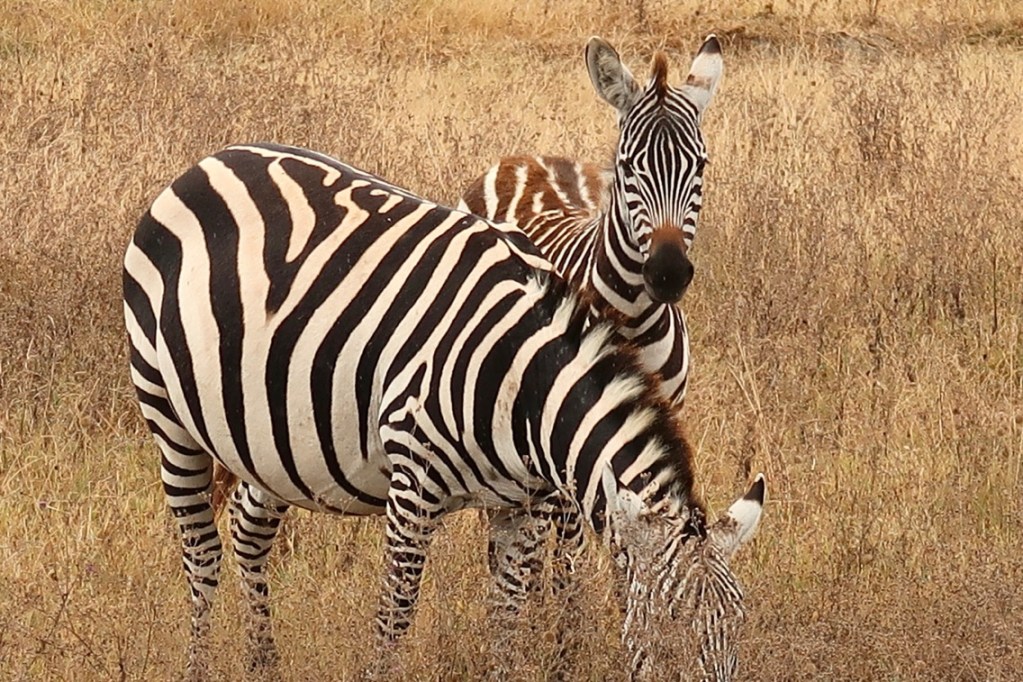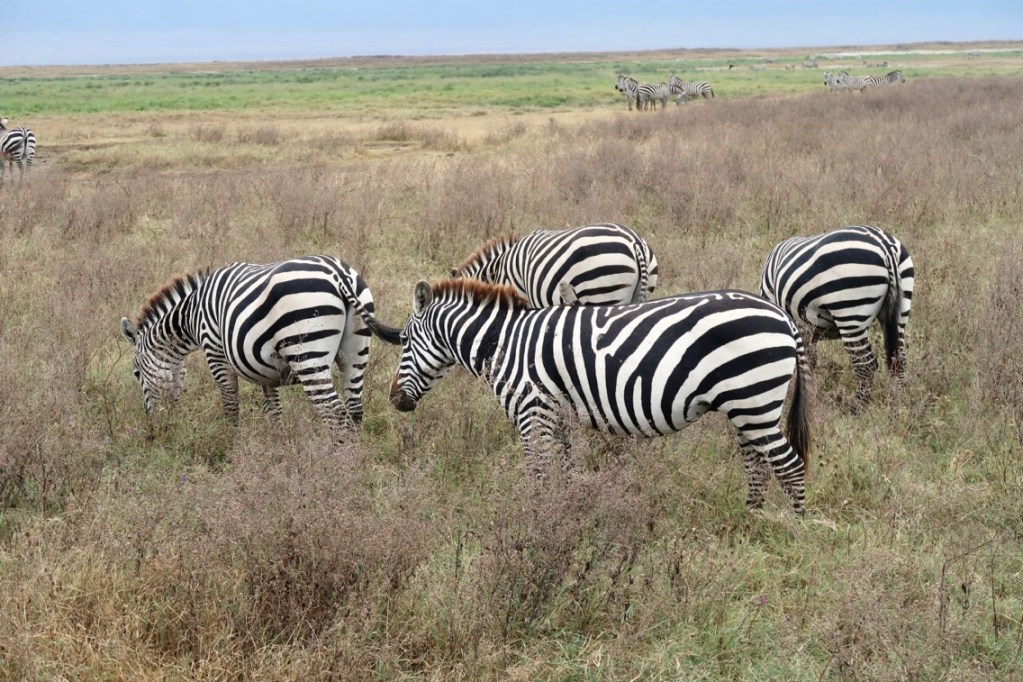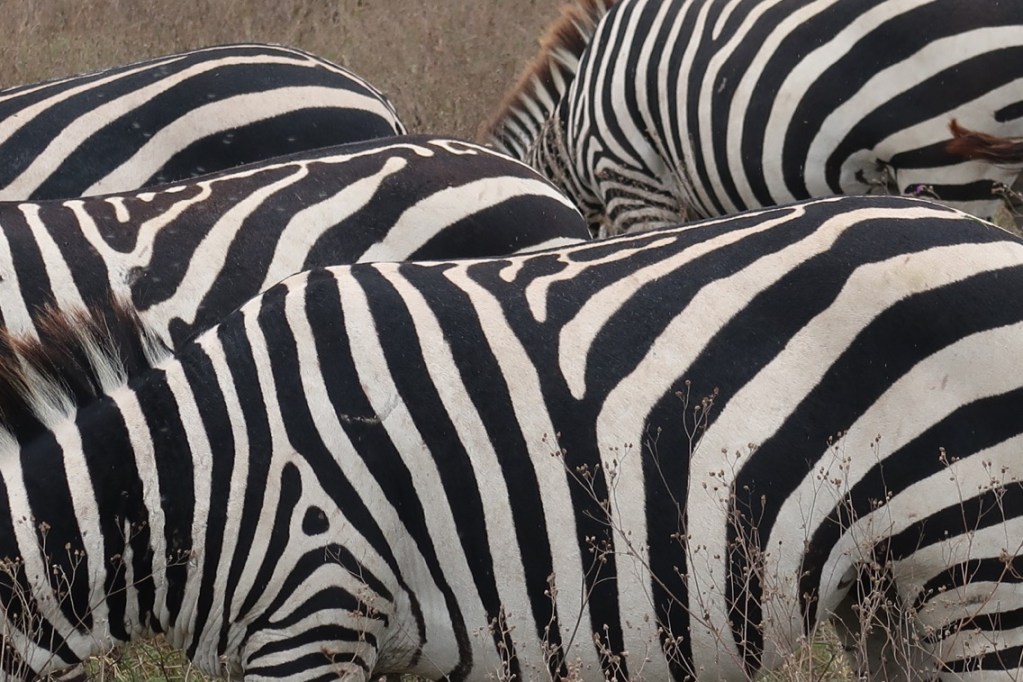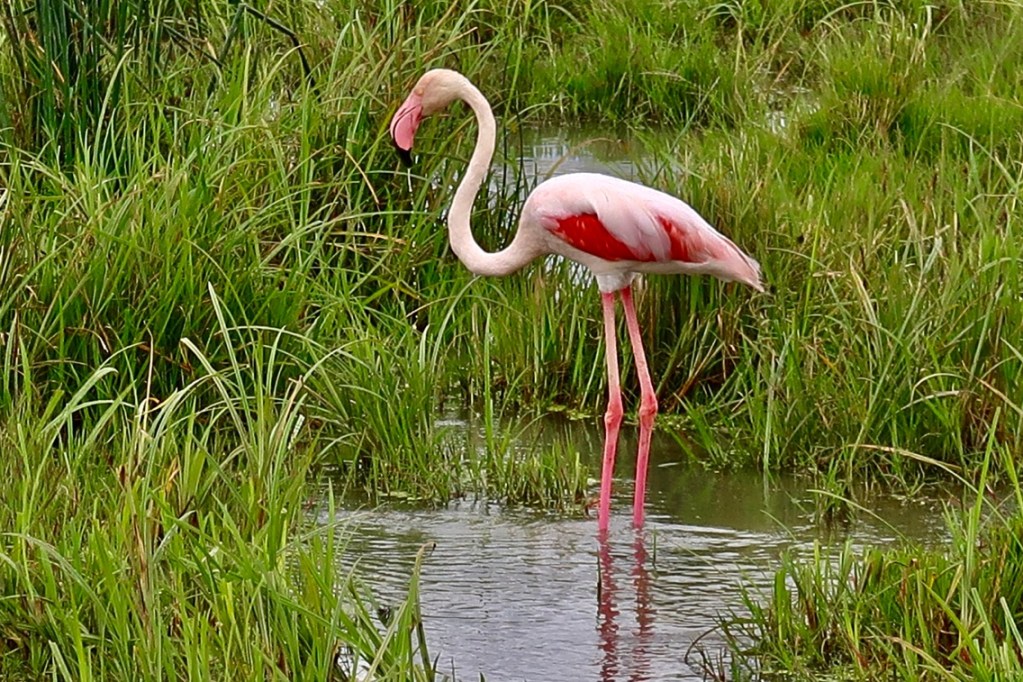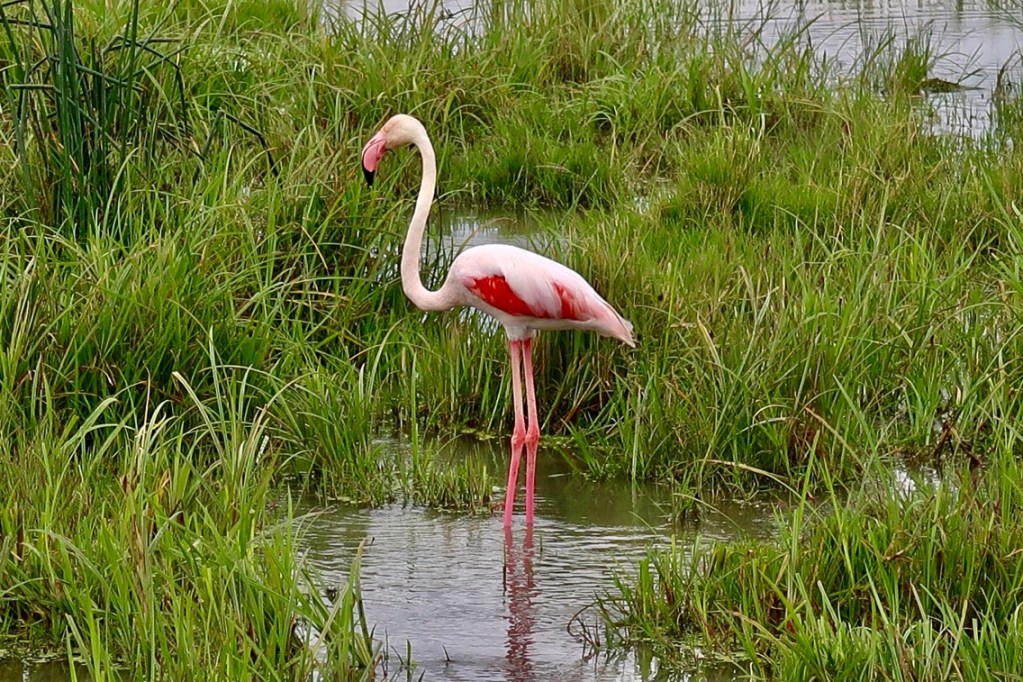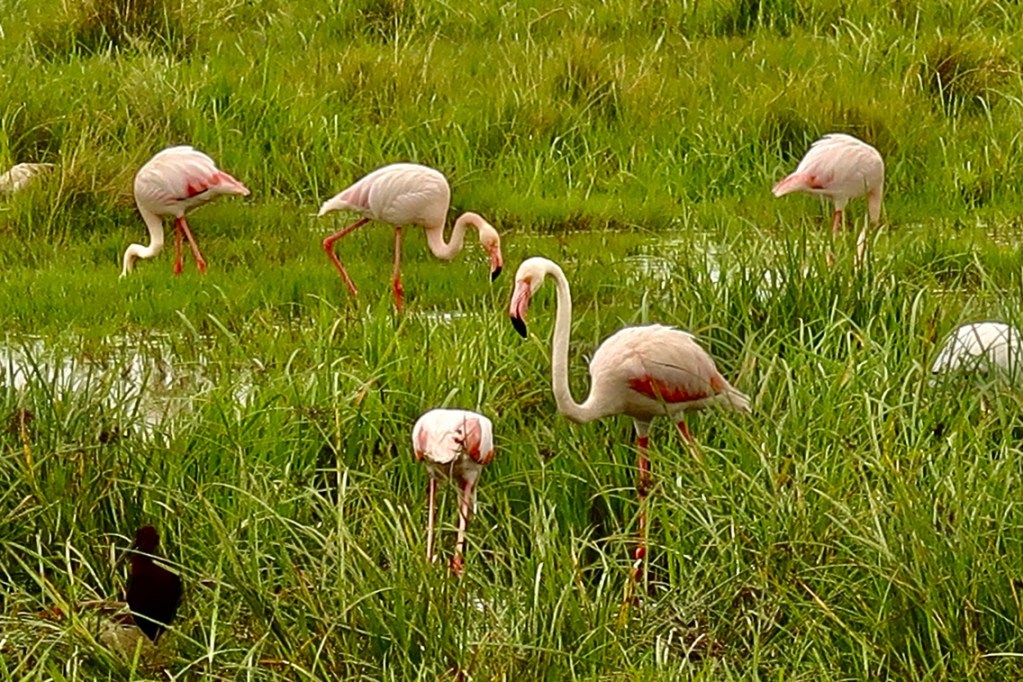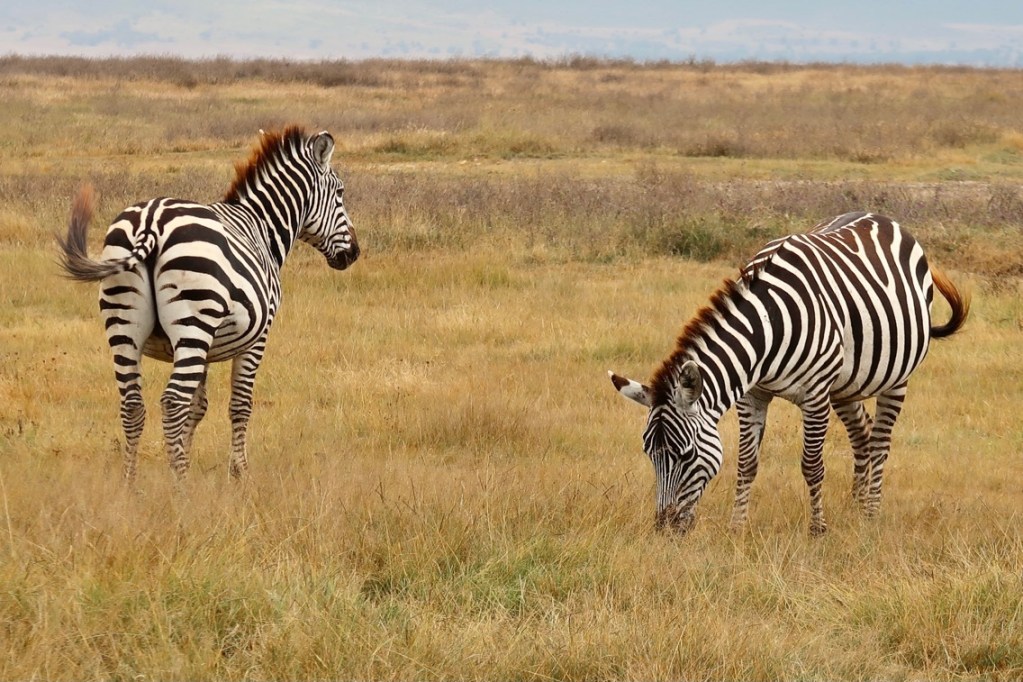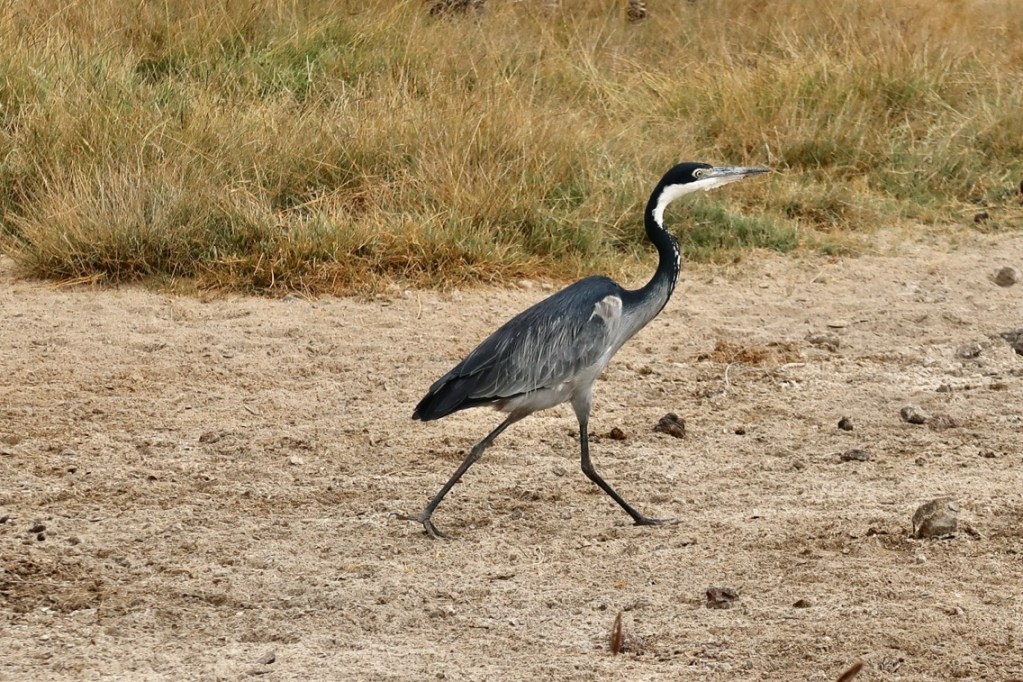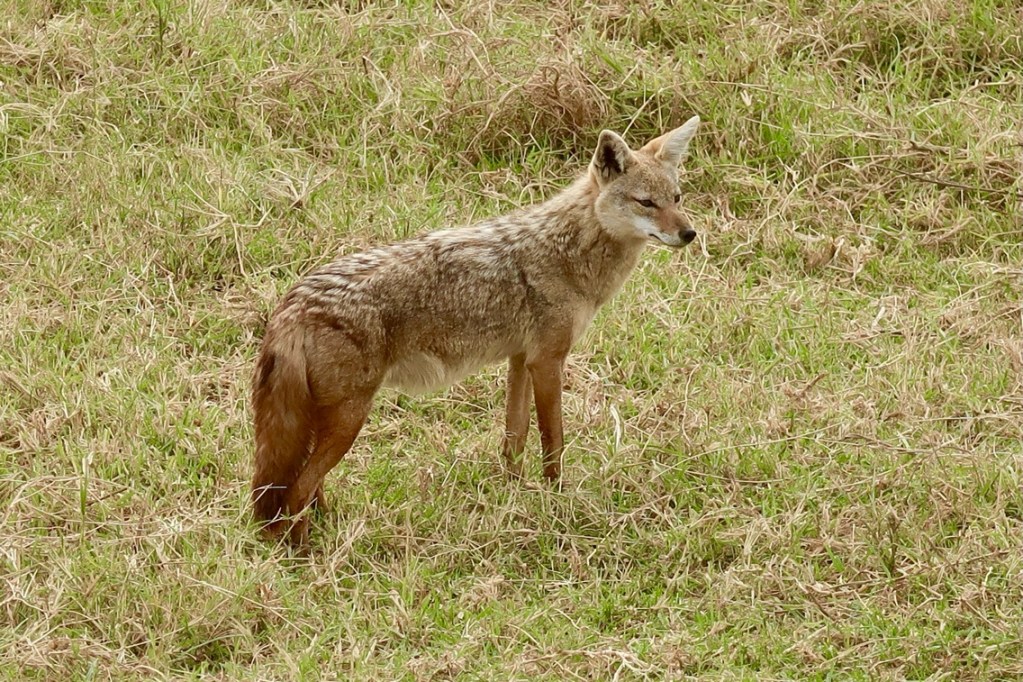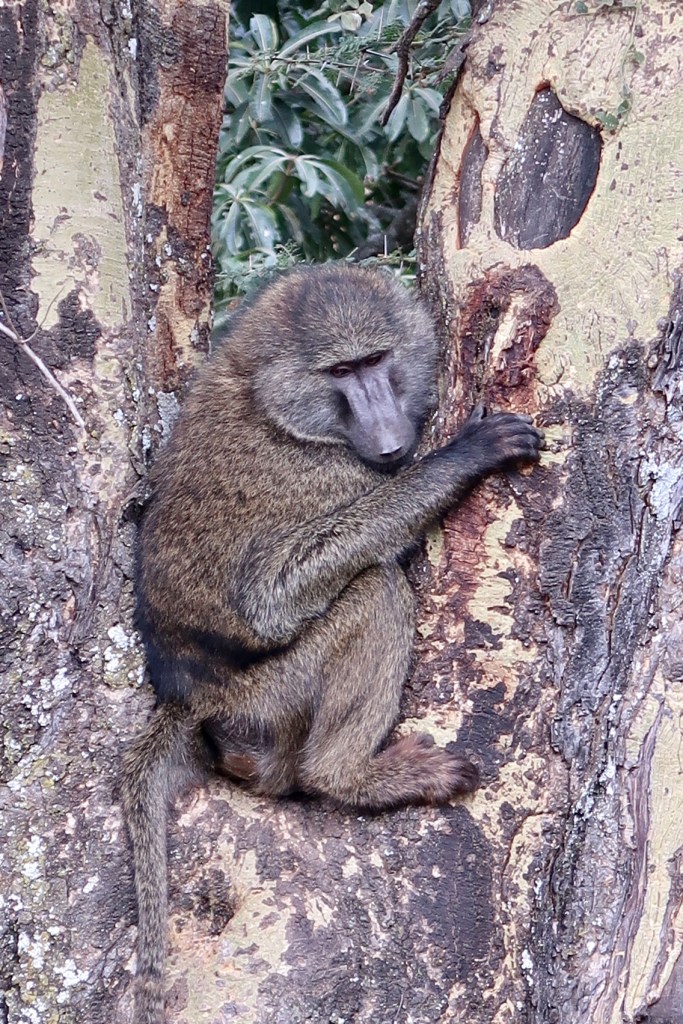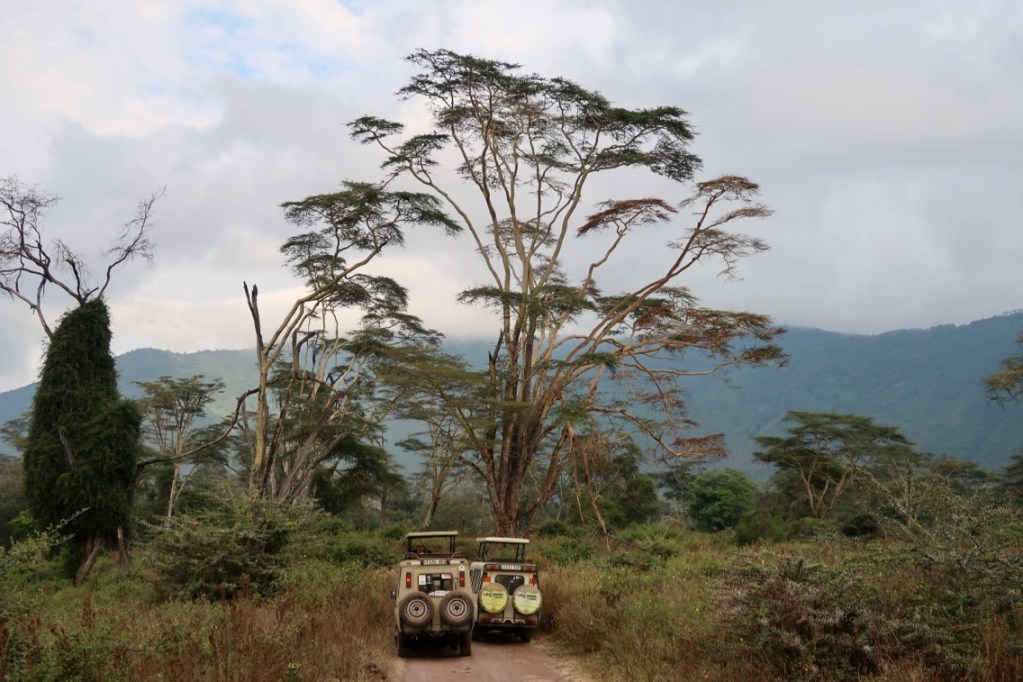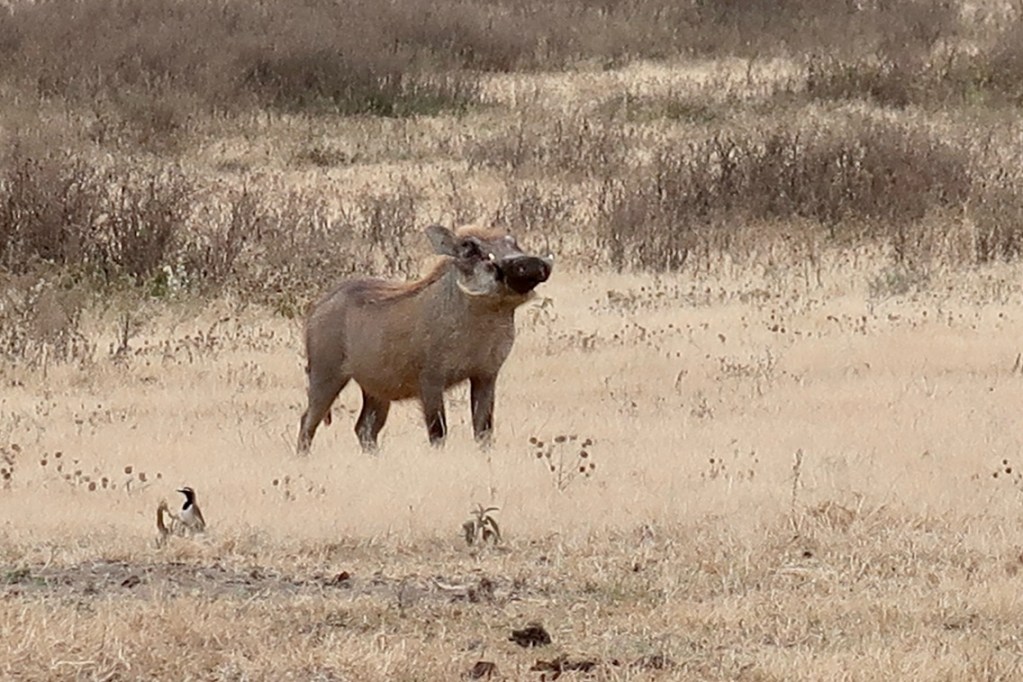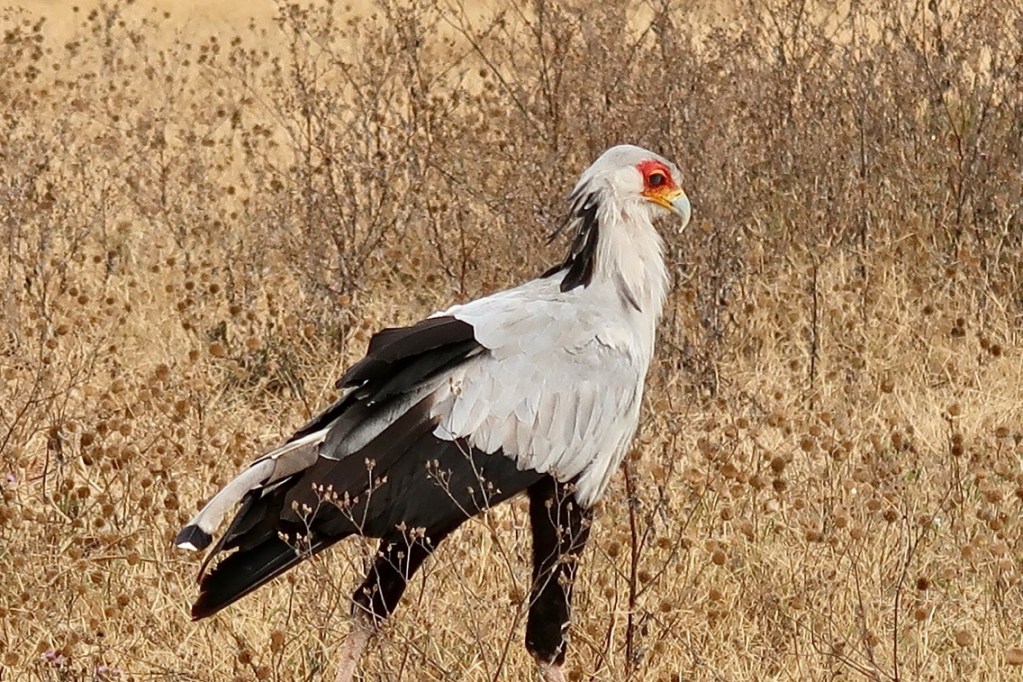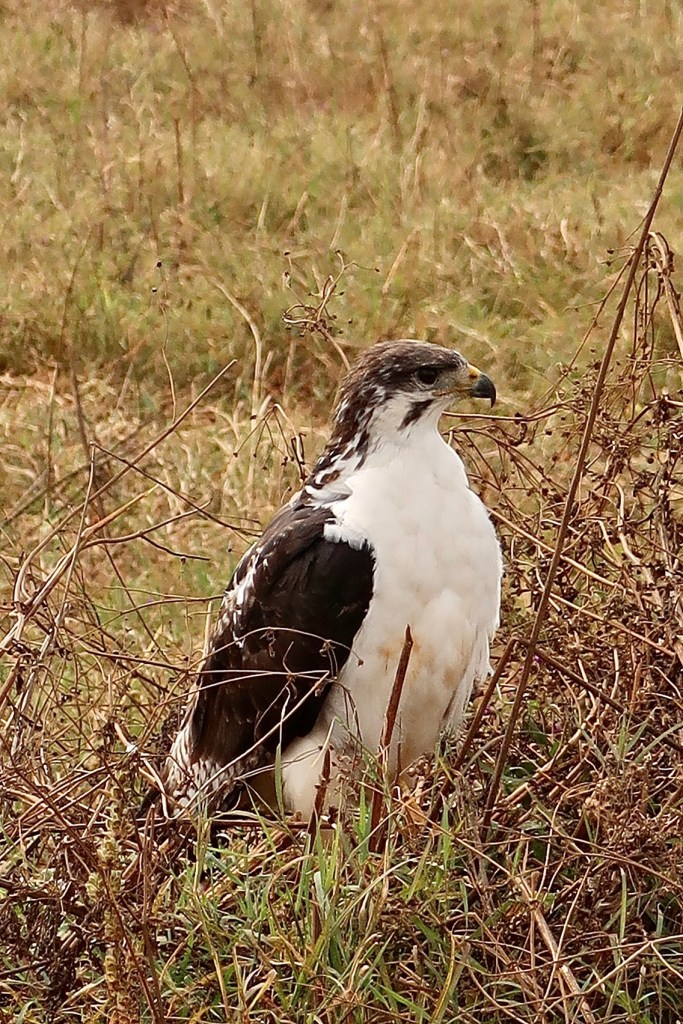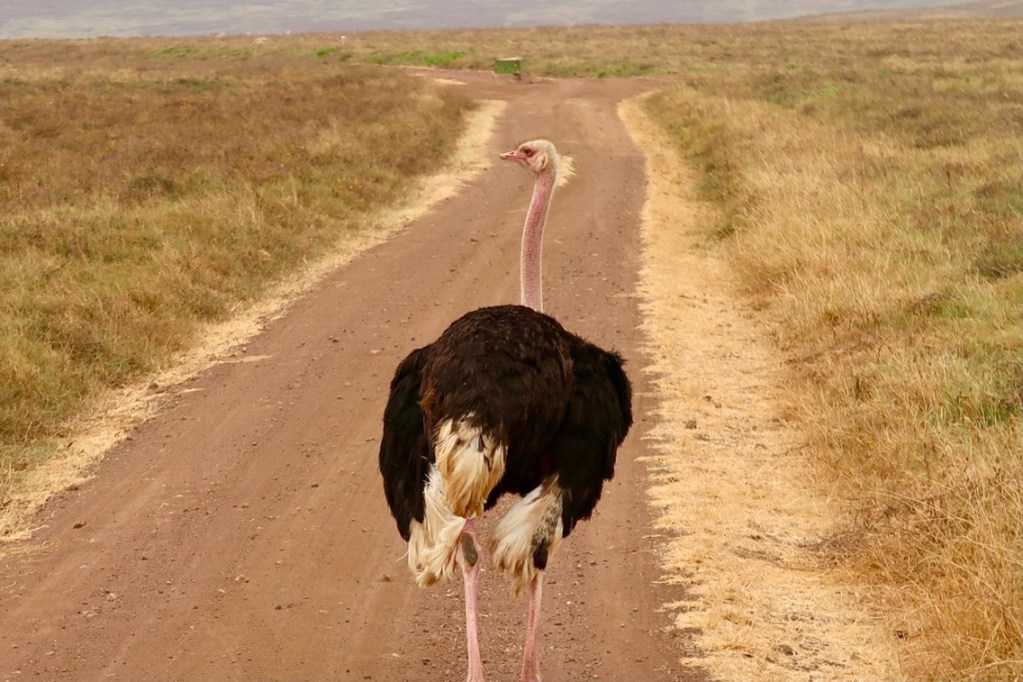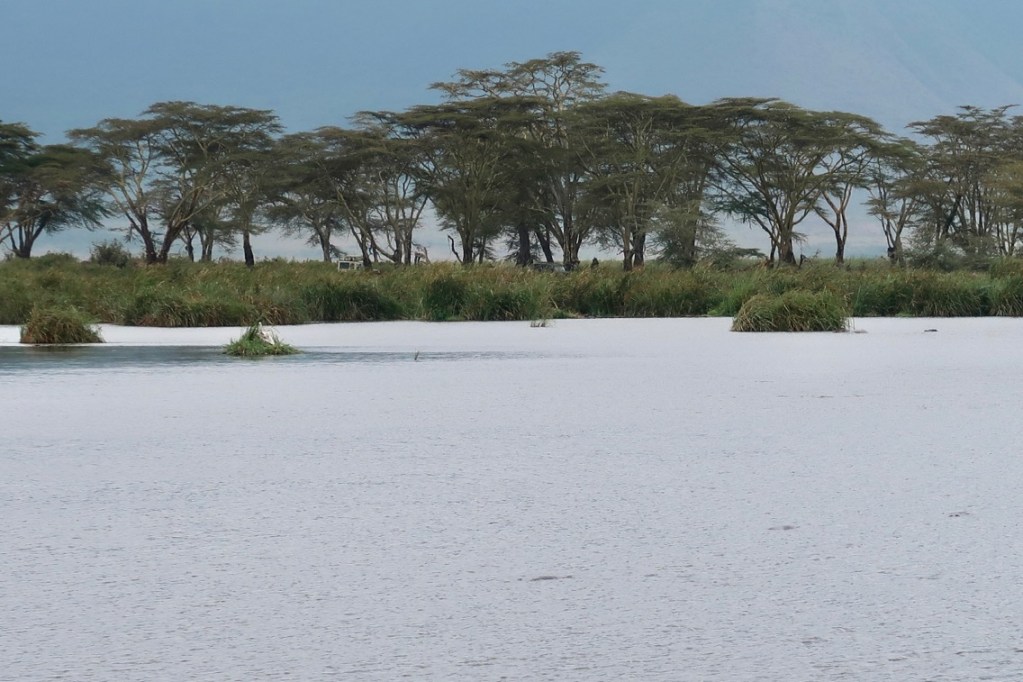Ngorongoro Crater, Tanzania

Ngorongoro Crater, Tanzania
Ngorongoro crater is the biggest volcanic crater in the world that has animal life and vegetation growing in it.
Normally, volcanic craters are barren land, but this crater is a land of mystery and vast beauty.
The Ngorongoro Crater is actually a caldera.
It was formed two and a half million years ago, when a large volcano collapsed on itself.
The crater itself is about 610 metres deep by 260 kilometres square.
To enter the crater, you drive up to the crater’s rim, and follow a narrow dirt road along the rim until you can descend into the crater.
Because of its narrowness, the crater’s roads are one way only.
You descend on a single road and ascend out of the crater on another road.
The rim of the crater was shrouded in thick mist during the mornings and late afternoons we drove through it.
The thick mist gave the land a mystical feel, as if you were entering a land forgotten by time and hidden from view of any modern civilization.
Well…. All except for the safari vehicles with other tourists like us, who had come to see this beautiful landscape with its abundance of wildlife.
The Ngorongoro crater is a protected park, and so the traditional Maasai tribes are no longer allowed to bring their herds of animals to graze in it.
But the greater Ngorongoro Conservation Area includes vast expanses of highland plains, savanna, woodlands and forests that still have traditional Maasai villages within, and so this area does allow multiple land uses.
The Conservation Area allows the semi-nomadic Maasai pastoralists to continue to practice their livestock grazing.
The name Ngorongoro is an old Maasai name that was given to the area because of their cowbells.
The Maasai tribe used to make hollowed-out wooden bells, and tie them to the necks of the cattle that were grazing on the floor of the Ngorongoro crater.
If you stood at the crater rim on a quiet day, you would hear the cows’ wooden bells ringing and clicking “Ngoron Goro, Ngoron Goro, Ngoron Goro,” as the cows moved around the land.
Approximately 40,000 people live today in the conservation area.
They share the land with an incredible amount of wildlife.
There are around 30,000 animals, ranging from leopard, cheetah, elephant and hyena to warthog, buffalo and impala.
It’s also one of the best places to see the endangered black rhino (which we did see with binoculars) and black-maned male lions (which we did not see.)
You won’t find any giraffes in the crater.
It’s thought that they can’t enter as the rim of the crater is too steep for them to walk down.
Around 450,000 people visit the Ngorongoro crater a year, and all are required to pay for permits to enter the crater and gorge.
Families of hungry and aggressive baboons live by the entrance gates, and they climb on the cars looking to grab any food they can get their hands on.
Inside the park, the baboons are not aggressive and are not interested in humans. This is a good reminder of why we must never feed wild animals.
Archaeological research in the area has yielded a long sequence of evidence of human evolution and human life in the area, including early human footprints dating back 3.6 million years.
The park has designated picnic areas and toilets.
All the safari tour companies operate the same way.
The lodge in which you stayed the night before prepares for you a packed lunch box.
You eat your lunch in the picnic area with all the other safari vehicles. These picnic areas are the only places in the park that tourists are allowed to get out of their vehicles and stretch their legs.
The safari drivers have short wave radios, which they use to notify other drivers if they have seen something special, like a family of lions, cheetahs, leopards or other animals that are not common to see.
The drivers also stop and chat with one another, mostly exchanging information about what they’ve seen and where.
The big birds that we spotted all day were magical to me.
They looked to me to be reminiscent of Jurassic times, big and graceful with strong running legs, some looking like they were too heavy to fly.
From Ngorongoro with blessings,
Tali

